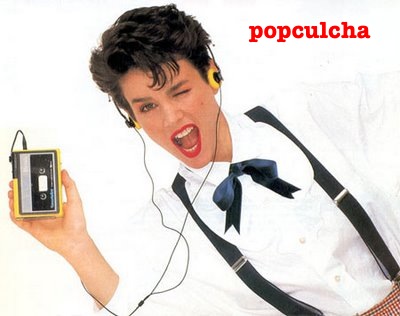Another deep source: the Last Poets, "the New-York based poetry group who fused spoken word poetry and African rhythms with the message of black pride, nationhood, and activism" (Reeves, 9). "Niggers Are Scared of Revolution," from their first, self-titled album (1970). Lyrics are here.
One of the most famous original sources of the "break," or the instrumental break, that DJ Kool Herc used to construct his soundtracks, using two turntables, flipping back and forth, "extending a five-second breakdonw into a five'minute loop of fury" (Chang, 79). This is The Incredible Bongo Band's "Apache" (1973).
The first commercially successful rap recording, "Rapper's Delight," released in October 1979.
"Freedom," from Grandmaster Flash and the Furious Five (1980). The star is the DJ, Grandmaster Flash, the first time "non-hip-hoppers heard a hip-hop DJ ply his trade" (Reeves, 29).
But the real tour de force of Grandmaster Flash is this: "Adventures of Grandmaster Flash on the Wheels of Steel" (1981).
Blondie's "Rapture," the first time rap was ever broadcast on MTV. With some lines that no one outside the exclusive downtown New York City scene could decode: "Fab 5 Freddy told me everybody's fly, D.J.'s spinning, I said, 'my, my,' Flas is fast, Flash is cool."
The video for Afrika Bambaata and the Soul Sonic Force's 1982 hit, "Planet Rock," complete with scenes of breakdancers, which ushered in rap's "electrofunk" era. "His crew dressed like a wild cross between a band of New Orleans Mardi Gras Indians and interstellar Afrofuturist prophets" (Chang, Can't Stop Won't Stop, 170-71). The song samples Babe Ruth and Kraftwerk.
"Planet Rock," the longer, 12" version, in full effect.
The video for Afrika Bambaata and the Soul Sonic Force's 1983 release, "Renegades of Funk." Bam & co. align themselves with other renegades like Sitting Bull, Tom Pain, Martin Luther King, and Malxolm X.
This is the cover of the Renegades of Funk 12": Bam and the Soul Sonic Force as superheroes.

The video for Grandmaster Flash and the Furious Five's "The Message" (1983). According to Jeff Chang, "The song was a home-studio concoction of Sugar Hill songwriter and house band percussionist Ed 'Duke Bootee' Fletcher, featuring a memorable synthesizer hook from Jiggs Chase...Bootee and sugar Hill mogul Sylvia Robinson could not interest Flash in recording it...But Robinson and Bootee recorded the track anyway, peeling off Furious Five rapper Melle Mel to add his last verse from a forgotten version of 'Superappin' [a song released by Grandmaster Flash in 1979, one month after "Rapper's Delight" appeared]...Flash saw where this was going, and he pushed th rest of the Five into the studio to try to rap Bootee's lines. It didn't work...The video appeared, with Flash and the crew lip-synching along to a rap only Mel had helped compose."
The record was the fifth rap single to hit gold.
At the end of the video is a streetside arrest skit that does feature the Furious Five.
